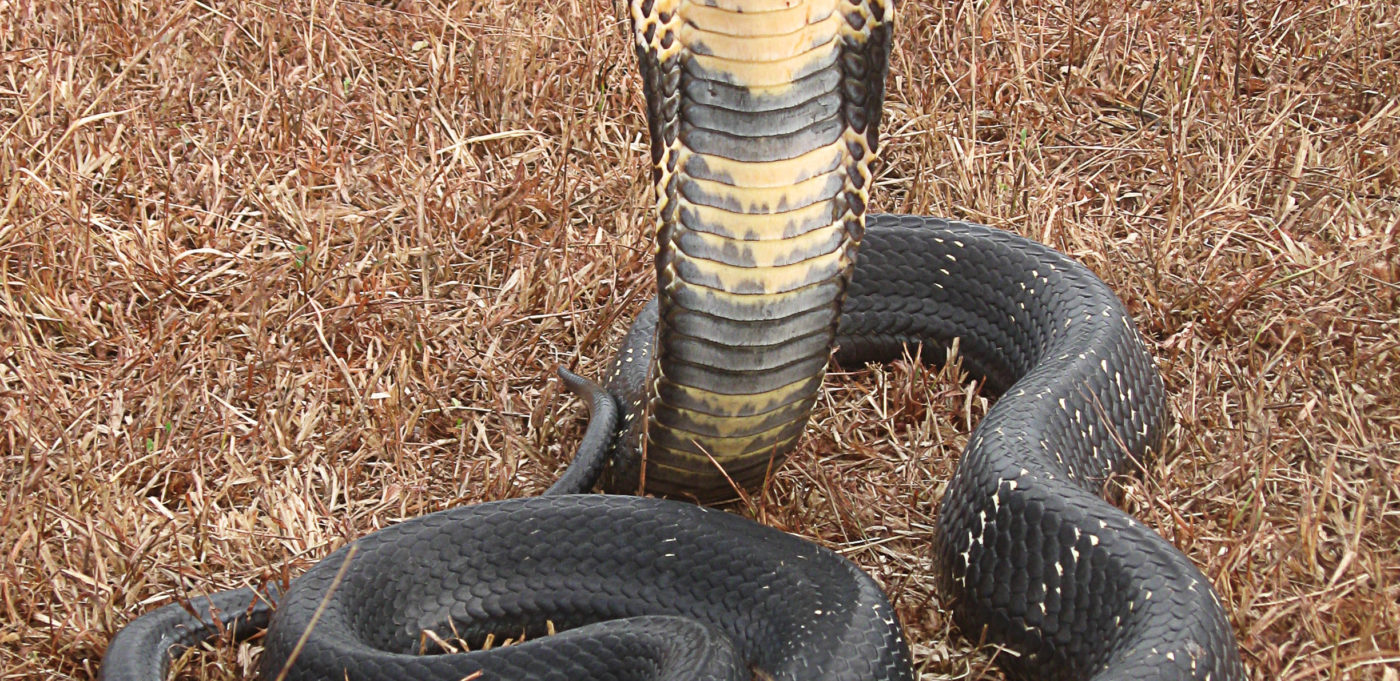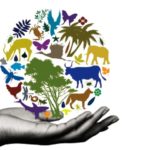Rajendra P. Kerkar
Goa: As death from a bite by a king cobra can take place within 15 to 20 minutes and since no anti-venom is manufactured in India, there is a lot of fear about this deadly snake. Taking risks, Amrut Singh and his teammates of Animal Rescue Squad have successfully caught the king cobras and returned them to their natural habitat in several cases.
Of late, incidents of King Cobras entering into areas of human settlement are continuously on the rise, mainly in the forested areas of Sattari, in the vicinity of the Mhadei Wildlife Sanctuary. Over the last five years, these large snakes have been entering the cashew plantations and also into the adjacent hamlets.
The changing climate, depletion of water resources and degradation of evergreen patches of forests are forcing the king cobra, the largest venomous snake in the world, into human inhabited areas in Sattari. Large areas of the forest have been transformed into plantations of cashew and other horticultural crops.
Just within the period of 24 hours from April 4 and 5, the volunteers of Animal Rescue Squad caught two king cobras in Thane-Dongurli and one in Brahma-Karmali villages of Sattari. Both these villages lie close to the Mhadei Wildlife Sanctuary. The three volunteers of ARS, Pradeep Gawandalkar, Vinod Sawant and Sunil Sawant rescued and released these snakes.
In Brahma-Karmali, a king cobra of 9.5 feet length had entered the house of Sunil Sawant. The snake caught inside the cashew plantation near Sateri temple of Pali-Thane was 12 feet in length. And a 11 ft-long king cobra was caught near the pump-house of Balasaheb Desai in Thane-Dongurli.
Amrut Singh, the president of ARS said, “On earlier occasions I had caught and rescued three king cobras in Hivre-Khurd of Sattari two years ago. However this time three king cobras have been rescued in three different locations. The staple diet of the king cobra is all species of snakes, including other venomous snakes and occasionally monitors lizards. Earlier, it was occurring in the dense forests, but nowadays degradation of the natural habitat has forced these snakes to venture into villages in search of rat snakes that seek rats that come to eat dried and thrown out cashew apples and to drink water from nearby ponds.”
As death from a bite by a king cobra can take place within 15 to 20 minutes and since no anti-venom is manufactured in India, there is a lot of fear about this deadly snake. Taking risks, Amrut Singh and his teammates of Animal Rescue Squad have successfully caught the king cobras and returned them to their natural habitat in several cases.
Ramesh Zarmekar, the member of Vivekanand Environment Awareness Brigade, Keri says, “The incidents of King Cobra coming near human settlements are on the rise as the snake feeds mainly on the rat-snakes and they are easily available near the human settlements, thriving on rodents.”
The king cobra or Hamadryad is unique among Indian snakes for an unenviable reputation for aggressiveness and courage. Its staple diet is other smaller snakes and it occasionally eats monitor lizards too.
“It occurs mainly in the dense forests of the Western Ghats, but today increasing monoculture afforestation and encroachment on the evergreen patches of forests for the cashew plantation have threatened its natural habitat,” says Chandrakant Shinde, a wildlifer.



























